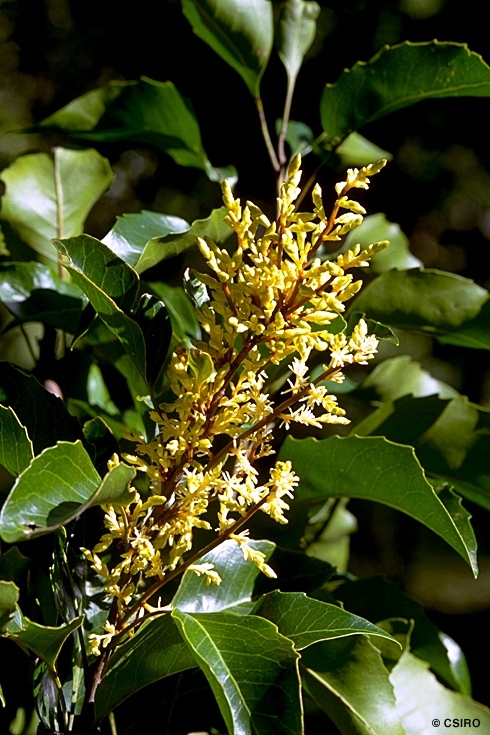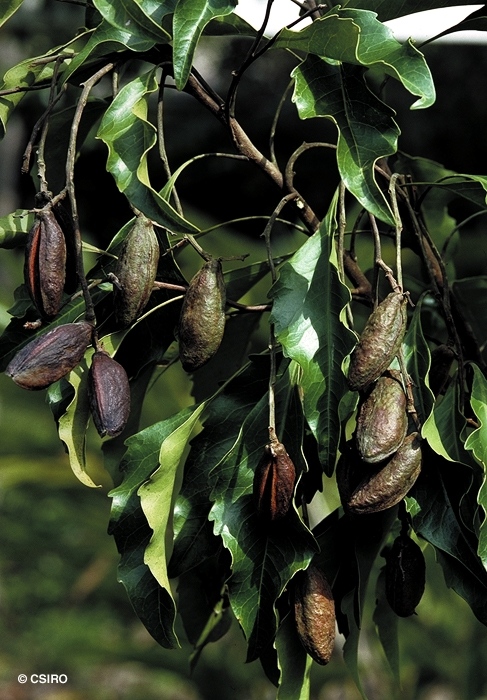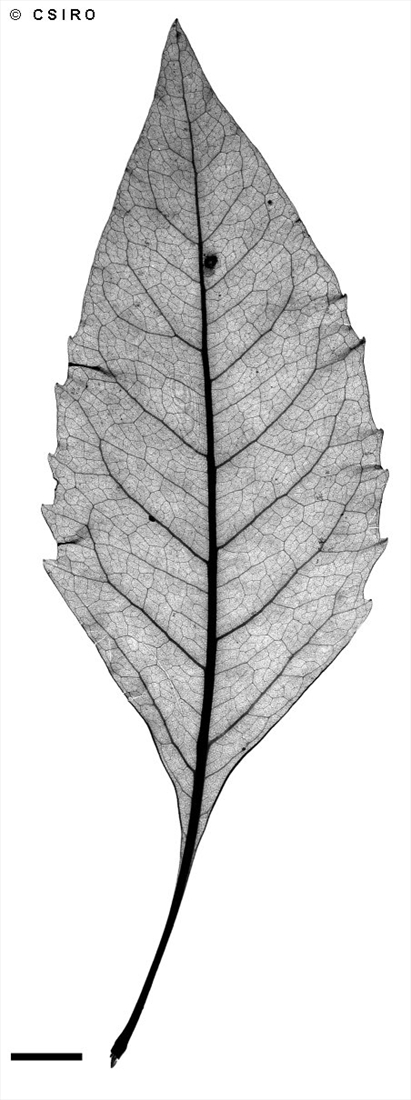Australian Tropical Rainforest Plants - Online edition
Neorites kevedianus L.S.Sm.








Smith, L.S. (1969) Contributions from the Queensland Herbarium 6: 15. Type: NNW. of Kuranda, in Forest Res. 315, Volck & White AFO/758 (holoypus, BRI.078532, 078533).
Oak, Fishtail Silky; Oak, Fishtail; Fishtail Oak; Fishtail Silky Oak
Oak grain in the wood and a corresponding dark, lace-like pattern in the blaze. Trunk dark, lenticels pale, rather conspicuous, tending to be arranged in horizontal lines.
Flowers sessile, usually paired, without a common peduncle. Tepals truncate, narrowly oblong, about 4.5-6 x 1-1.6 mm. Hypogynous glands 2-4, usually clavate. Ovary sessile, densely ferruginous hairy, ovules 6-8.
Fruits about 5-7 x 2-3 cm, shaped like an elongated mango (Mangifera indica). Seeds winged at one end, seed + wing about 2.5-4.5 x 1 cm, wing about 1.5-3 cm long.
Cotyledons about 7-9 mm long, truncate at the apex. First pair of leaves lobed and toothed. At the tenth leaf stage: leaf pinnate to pinnatisect especially towards the apex, leaflet blades unequal-sided throughout and serrate with more teeth on the broader side. Seed germination time 38 to 54 days.
Produces a rather dark durable timber with a conspicuous oak grain.
Wood specific gravity 0.86 Cause et al. (1989).





